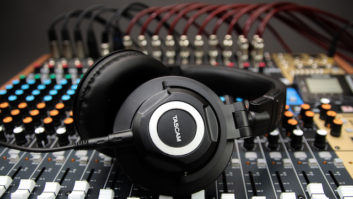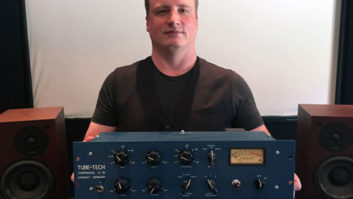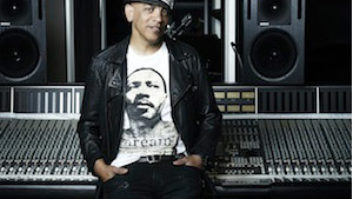One of the strongest debut releases to emerge from the R&B world during the past couple of years isAcoustic Soulby Atlanta-based artist India.Arie. The album’s title says it all: Arie is an artist who draws inspiration from the spiritual soulfulness of Stevie Wonder, the rootsy acoustic sensuality of Bill Withers and the urbane sophistication of Sade.Acoustic Soulhas not only sold over 2.5 million units worldwide but also garnered numerous awards and seven Grammy nominations. Arie’s second release,Journey to India, continued that stylistic path with more developed melodies and imagistic lyrical sentiment.
When it came time to take the show out on the road as a headliner, Arie and her manager, Fernando Gibson, focused on creating a show dynamic that was as intimate as the coffeehouses where she honed her music, while at the same time integrating the impact of her top-notch band.
At FOH, Gibson enlisted Ollie Cotton, whose background has included running sound for the Apollo Theater in New York City, Take 6 and Doug E. Fresh, as well as working on sessions with Quincy Jones, Bruce Swedien and Phil Ramone. Cotton also co-owns jazz label OCDK Records (www.ocdk.com) with J.C. Doo-Kingué. Cotton initially joined Arie last year during the artist’s tour with Sade.
For this round of touring, Cotton and the band sequestered themselves at Crossover Studios in Atlanta for rehearsals. “I’ve known Fernando [Gibson] for years, and he called me and said I should come out, and that this was a very worthwhile endeavor,” says Cotton after an Arie concert at Nashville’s famous Ryman Auditorium, home of the original Grand Ole Opry.
To ensure that Arie’s lyrical and vocal nuances are clearly heard, Cotton works hard to carve out space in the mix, while trying to keep some of the band’s power. “Nothing should overpower those qualities,” explains Cotton. “Any engineer can give you a great big bass drum sound, but then to make the acoustic guitar be heard, or to make the shaker clearly articulated, or experience all of the vocal nuances that happen, you have to really work to keep it all in balance. I’m not saying I get it right all of the time, but I work on it.” All of the mics onstage are Shure models, and Arie’s vocal mic is a Shure SM58 with a Shure wireless setup. True to the spirit of “acoustic soul,” the drums are all miked and there is no triggering, with the exception of a handclap-type effect on one song.
At the Ryman, Cotton mixed on a Midas console. “I’m pushing about 36 inputs,” he notes. “On the last tour, we used a Showco console, and before that, it was whatever the house would provide. As far as I’m concerned, these things are really interchangeable.”
Cotton set up in the usual location at the Ryman: slightly off-center at the back of the balcony, which meant that he had to check regularly for bass buildup under the balcony. “I’d go downstairs every once and a while and hear what it sounded like down there,” he recalls. “Go upstairs, put it up to where it’s filling up the downstairs and then go back downstairs and split that little difference.”
Showco provided both house and monitor systems, along with systems engineer Chad Prater and monitor engineer Scotty Reikowsky, whose previous tour credits include Filter, Dream Theater, Stone Temple Pilots, Kenny Wayne Shepherd and the Dixie Chicks. “I actually met India last summer when I was out with Sade and she was our support act,” recalls Reikowsky. “When I got the call asking if I would be interested in going out with her, I jumped at it because I really enjoy her music.
“India’s the kind of artist who is very spontaneous and intimate with her audience,” Reikowsky continues. “You never know what’s going to come up next. You have a set list, but right in the middle of a song, she could just start talking to the crowd while the band’s still playing and having a great time with it. It’s easy to see that what she does is so true and real. That’s what’s so fun about watching her play every night. She definitely works with the crowd and gathers energy from them.”
A DREAMY YET SENSIBLE MIX
Reikowsky describes the band as “a monitor guy’s dream, because they pretty much mix themselves dynamically as a unit when they play. They’re amazing musicians.” However, while he prefers to mix for in-ear monitors, Arie likes to work with wedges, and Reikowsky is quick to point out that the concert dynamic includes high stage volume and monitor levels. “There are times when this band starts rocking together, and it can get loud up there,” he says. “You’d be surprised — India is a lot louder than a lot of people think she is onstage. She likes it loud, especially on her vocals.”
Cotton, who once ran monitors for Roberta Flack, stresses the importance of maintaining a sensible balance between monitor mix levels and the house sound. “It is important that the monitor mix is married well with the front-of-house mix,” he notes. “Some monitor mixes can get in my way out front. A lot of monitor guys don’t understand that it’s not about loud, it’s about fidelity. They don’t think you can have fidelity, but you can. You see, fidelity is what the artist and musicians are really missing. They think that loudness is the answer, and it’s not.”
“The whole gig is acoustic guitar-driven, where most R&B situations are keyboard-driven,” says Shannon Sanders, the band’s music director and keyboardist, who also co-wrote several songs on Arie’s two albums. “It’s a trip, because I had to learn a lot more about guitar since I’ve been doing this and rethink my whole approach to playing keys. Usually, keyboard players think in terms of how to thicken things up sonically, but with this situation, I’ve had to think about how to be sparse, how to lay low for my moments.”
“India’s lyrics are incredible. She understands things way beyond her age,” rejoins Cotton. “You just find yourself at certain times saying, ‘Damn, I know what that means, but how does she know that?’ When I’m out there with the audience, ladies who are older come to me and say, ‘How does she know that? She’s 20-something-years old, and she knows that!”
To a person, every member of the crew and band has focused on the primary element that has earned Arie so much acclaim and a devoted fan base: her artistic point of view. As a result, Cotton’s mix stays well away from over-hyped arena-level SPLs and sounds more like a good stereo system. “India doesn’t need that kind of mix going on,” says Cotton. “They come to hear her music and not to be overpowered and blown away. They come to listen.”




